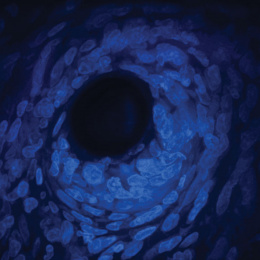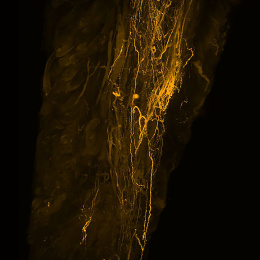Decellularization of the Sciatic Nerve 1
Decellularization of the Sciatic Nerve 1
Amaris Castañón and John Haycock, Kroto Innovation Center, The University of Sheffield
This is the region within our nerves where neurons extend from; these extensions allow for movement and touch perception. I was observing the cellular population within my porcine sciatic nerve model together with the different layers of the fascicles within the sciatic nerve: epineurium, perineurium, and endoneurium.
A vital part of this project’s goal was to decellularize the sciatic nerve model. In order to ensure that the decellularization process was successful, H&E staining allows observation for loss of cellular population while preserving the natural environment of the extracellular matrix. Preserving the properties of the extracellular matrix, we can then create a biomaterial unto which neuronal cells are seeded and observe their behaviors in terms of axonal outgrowth in contrast to cellular seeding on synthetic biomaterials like polycapralactone or poly-lactic acid (two commonly used degradable biomaterials in peripheral nerve injury repair).






